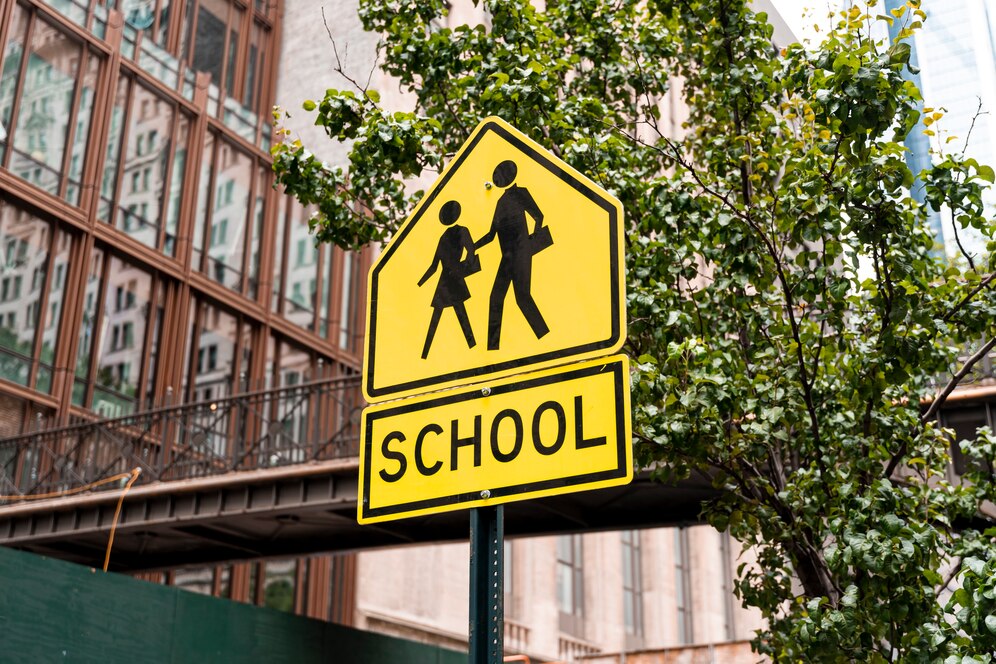
Table Of Contents
Avoid Legal Charges When Running A School: Essential Steps
School safety is crucial for students’ physical and mental health. Therefore, a positive school climate is essential. It promotes safety and desirable outcomes for future generations.
A healthy school environment influences student behavior, mental health, and attendance and helps avoid legal threats.
However, addressing student behavior is central to school safety.
Legalities may also arise due to the student’s mental health problems and adverse childhood experiences. These circumstances can lead to negative outcomes like the following:
- Poor academic achievement.
- Behavior problems.
- Dropout rates.
- Delinquency.
Therefore, schools should have a clear, fair, and widely known discipline policy to manage student behavior and save the organizational reputation.
In this article, let us explore the steps schools must take to avoid legal charges and give children a better future.
Steps To Avoid Legal Charges

Given below are some of the most important steps that every school must undertake to avoid any legal charges—
Assess The Safety Requirements Of Your School
A comprehensive risk assessment is crucial for a school’s security planning and operations, identifying potential threats and impacts.
Each school district and school has its unique vulnerabilities. Therefore, it is important to establish a multidisciplinary team with a leader should develop a comprehensive safety plan.
The risk assessment should be reviewed annually based on stakeholder feedback and policy changes.
Based on identified security gaps, a security plan should be developed using the best technologies to secure campuses, buildings, and classrooms.
Furthermore, schools must customize their safety and security policies to address unique needs. However, these policies and customizations should not compromise the school’s primary educational mission, which is essential.
Student input into security plans is also crucial. It can help identify previously unknown security gaps.
Ensure And Encourage Hygenic Practices
The U.S. Centers for Disease Control and Prevention (CDC) and the U.S. Department of Education have released a handbook to promote safe in-person learning in K-12 schools.
The handbook emphasizes the importance of good handwashing and respiratory hygiene practices, which reduce the spread of germs and can cause illness.
The CDC provides adequate supplies and lays down the core principles that teach students the importance of hygienic practices.
The handbook also promotes the practice of handwashing and behaviors to maintain respiratory etiquette for students with disabilities.
Schools can support healthy hygiene behaviors by providing adequate supplies of face masks, such as soap, tissues, and no-touch/foot-pedal trash cans.
Moreover, ensuring the supply of safe drinking water is of utmost importance when it comes to avoiding legal charges. You can find the best water-purifying technologies here: https://aquaanalytic.ae/.
Control Behavioral Threats
Behavioral threat assessment and management (BTAM) systematically identifies, assesses, and manages dangerous or violent school situations.
It helps schools differentiate between legitimate threats and actual threats of targeted violence. The goal is to provide appropriate school and community-based intervention and support.
Additionally, BTAM avoids impulsive decisions and requires considering context and disability rather than a zero-tolerance approach.
However, recent school attacks have tarnished the perception of schools as safe. With televised images of injured students becoming national symbols, this has become one of the most pressing concerns for every school in the US.
Targeted school violence occurred in 37 US communities between 1974 and 2000. This raised questions about the planning and prevention of such attacks among educators, law enforcement officials, mental health professionals, and parents.
Following The Student Code Of Conduct Document
The student code of conduct is a crucial document for independent school districts. It is adopted by the board of trustees and district-level committee.
It outlines the circumstances under which the school must remove a student from the following areas:
- A classroom.
- School campus.
- Vehicle owned or operated by the district.
- Disciplinary alternative education program.
However, some factors need to be considered by the school authority.
These factors include:
- Self-defense.
- Intent.
- Disciplinary history.
- Disability.
- Status in the Department of Family and Protective Services conservatorship.
- Homeless status.
Moreover, this code provides guidelines for setting the length of a term for removal and expulsion. It addresses notifications of violations, prohibits bullying and harassment, makes hit lists, and ensures district employees enforce these prohibitions.
Lastly, it explains the appeal process and provisions regarding refusal of entry to or ejection from district property.
Understand And Follow The Government’s Rules

Both federal and state governments shape the education system. However, local governments determine educational policy.
The 10th Amendment to the Constitution established that education is a state function, with each school district administered and financed by the community.
The education system is shaped significantly by federal and state governments. However, the latter’s intervention brought forth a broad range of standards and quality in education.
The federal government has yet to play a significant role in education. However, this role is important enough to warrant constitutional protection.
The 14th Amendment protects students from discrimination based on race, gender, religion, disability, or ethnicity.
Federal agencies and departments, such as the National Science Foundation and the Department of Education, can impact education.
Congress passes laws that shape the education system, such as the following:
- Elementary and Secondary Education Act (ESEA).
- Individuals with Disabilities Education Act (IDEA).
- Every Student Succeeds Act (ESSA).
- No Child Left Behind Act (NCLB).
- Higher Education Act (HEA).
Court decisions have also shaped education, exploring the balance between individual rights and societal needs.
The Role Of The School Administrator
As a school administrator, enforcing the school’s rules and regulations is crucial. Familiarizing oneself with the school’s discipline policy and comparing it to others can help.
Talking to teachers and holding meetings with staff can provide insights on better enforcement. Different groups may have different approaches to enforcing rules.
To maintain a consistent school culture, enforce rules consistently and be aware of potential demeaning or punitive actions.
It’s important to maintain a balance of assertiveness and fairness when dealing with various situations. Keep in mind that things might not always be as they appear, so it’s crucial to approach each case with caution and thorough analysis.
Moreover, as the administrator, you hold the ultimate authority to enforce rules and regulations, so it’s crucial to exercise your power responsibly and judiciously. Remember, your actions will have a significant impact on those around you, so always act with integrity and empathy.
Seek help from teachers, staff, and peers to create a cohesive school culture and ensure everyone is on the same page.
Read Also:









